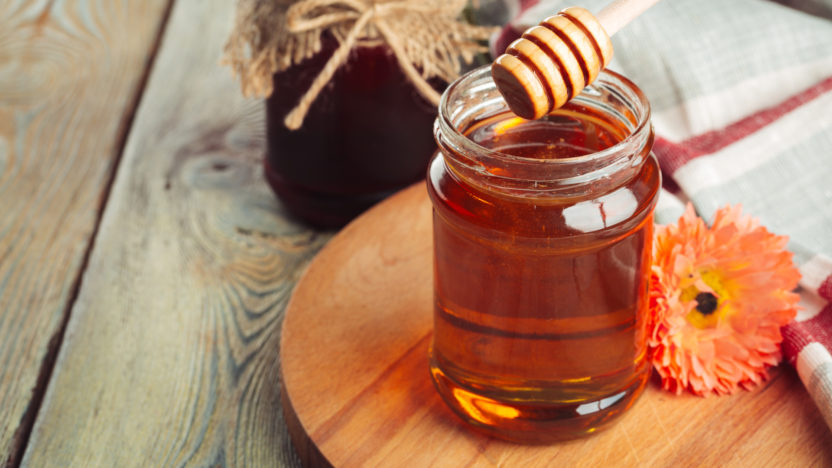 DOP
Toscana
DOP
Toscana
Lunigiana Honey
The LunigianA Honey is a Protected Origin Designation (DOP) on the national list approved by the Ministry of Agriculture And Forestry, whose requirements are regulated by the production discipline of the Tuscany Region.
Variety
It is called Honey of lunigiana of Acacia, the Honey produced on flowering Robinia pseudoacacia L.
It is called “Miele of Lunigiana” of Chestnut, the Honey produced on flowering of Castanea sativa M.
The Honey of lunigiana of Acacia has the following characteristics:
– it keeps liquid and clear for a long time; It may, however, present, at the end of the marketing period, a partial formation of crystals, without yet reaching a complete crystallization;
– consistency: always viscous, depending on the water content;
– color: very light, from almost colorless to straw yellow;
– smell: light, unpersistent, fruity, confeited, similar to that of flowers;
– flavor: decidedly sweet, with very light acidity and without bitterness. The aroma is very delicate, typically vanilla, not persistent and free of aftertaste.
The Miele of Lunigiana di Castagno has the following characteristics:
– it remains liquid for a long time; It may, however, present, at the end of the marketing period, a partial and irregular crystallization;
– color: dark amber, often with reddish hue;
– smell: quite strong and penetrating;
– flavor: persistent, with bitter component more or less accentuated.
Production
The production beehives can be “sedentary”, that is, remain for the whole year in the same location, or “nomads”, but with displacements within the territory described above for the entire period of the blooms concerned; the stations must still be located within the territory identified above.
In any case at the beginning of the harvest the used apples must be strictly empty.
The beehives for production are conducted according to the following indications:
– families must be contained in rational honeys, i.e. in mobile honeys and vertical development;
– beehives must be subjected to prophylactic measures and therapeutic interventions necessary to prevent the containment of diseases in accordance with the provisions of the National Health Service;
– any artificial nutrition must be suspended before laying the apples and should be carried out only with sugar and water;
– the apple rye beans must be empty and clean when entering the hive and must never have brood content; At the time of the input of the apples you must use the queen exclusive or other suitable tool to avoid the oviposition in the apple plant;
– the withdrawal of the apples will take place after the bees have been removed from them by a method that preserves the quality of the product (e.g. with apiscampo or blower); The use of repellent substances is prohibited.
To qualify for the Protected Source Designation, honey must be extracted and processed in the following ways:
– i locali destinati alla smielatura, lavorazione e conservazione del miele devono ricadere nell’ambito territoriale di produzione e rispondere alle norme legislative vigenti;
– all equipment used for honey harvesting, storage and processing must be made of food material and provided for by current EU and national legislation;
– the extraction must be done with centrifune smielators;
– filtration must be done with filter permeable to the figurative elements of Honey; After filtration, Honey must be placed in containers for decanting;
– if it is necessary to heat Honey for technological purposes (transfer, invading, etc.) heat treatment must be limited to the actual time required for these operations and the temperature of the product must never exceed 40 degrees C.
Only glass packages with twist-off closure are allowed in the following sizes: 30g to 1000g.
This conditioning in the geographically delimited area, as well as the other stages of the production process, is a practice traditionally in use in the same area and is justified by the following reasons:
(a) to safeguard the quality of the product, as packaging in the delimited area avoids all the risks of alteration of chemical-physical and sensory characteristics that could occur by moving honey to other areas, with the inevitable displacements and changes in physical and environmental conditions;
(b) to ensure the control and traceability of the product, in order to make effective the control activity carried out by the authorized organism at all stages of the process.
History and curiosity
The Lunigiana Honey has a deep connection with the environment at all stages of its production.
The range of the production area consists of a single body and corresponds entirely to the territory of the current Montana Community of Lunigiana whose geographical boundaries coincide almost entirely with natural ones, consisting of the mountain watersheds that border the Lunigiana from the other surrounding valleys.
The Lunigiana Honey is produced in a homogeneous territory characterized by a natural environment essentially intact.
The Lunigian eland has a wide spread on the territory of spontaneous and cultivated arboreal essences of Chestnut and Acacia that guarantee, as can be seen from scientific studies, constant and uniform productions and blooms that allow important productions definitely
monofloral and competitive for sensory characteristics.
The above connection with the environment determines a peculiar product, the particular characteristics of which still distinguish the Honey of Chestnut and Acacia produced in Lunigiana compared to the similar honeys of other areas.


